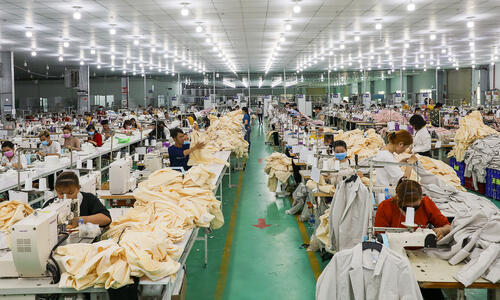Future of Vietnam’s Textiles Industry Looming in Limbo as COVID-19 Threatens Manufacturing Processes

Future of Vietnam’s Textiles Industry Looming in Limbo as COVID-19 Threatens Manufacturing Processes
Covid-19’s impact on Vietnam’s once-booming textile and garment industry seems to be unfurling into an unruly state. According to the Vietnam Textile and Apparel Association, ~35% of the country’s textile and garment companies have shut down during the pandemic. Given Vietnam’s global position as the second-largest producer after China, the ramifications of this steep downturn are far-reaching.
Major apparel and shoe manufacturers are heavily dependent on Vietnam’s production of goods. Nike sources over 50% of its footwear in Vietnam, with other brand names like Gap, Lululemon, and Uniqlo having extensive production chains in the country as well. All companies have publicly blamed Vietnam for product shortages, massive losses in revenue, and sluggish output/delivery times. There’s added pressure on these companies as the holiday season approaches. Many brands have thrown out the possibility of temporarily outsourcing production in nearby countries to counteract potential losses, with Bangladesh, Sri Lanka, India, and Indonesia as top contenders.
Nonetheless, apparel and shoe brands have already invested so much time, resources, and effort into building their hubs in Vietnam. With so much at stake, over 90 companies, including Nike and Gap, signed a letter to President Biden in mid-August 2021 urging him to ramp up vaccine re-distribution from the US to Vietnam. The companies made their dire circumstances clear in the letter, claiming that “[t]he health of the U.S. apparel industry is ‘directly dependent on the health of Vietnam’s industry’” (Vietnam’s Factory Shutdowns Tug at Apparel Industry’s Seams). No longer is the issue of manufacturing textiles in Vietnam a regional one. Supply chains, geopolitical interests, and future dynamics in Southeast Asia are linked to the global stage with this developing situation as future developments of the industry remain to be seen.